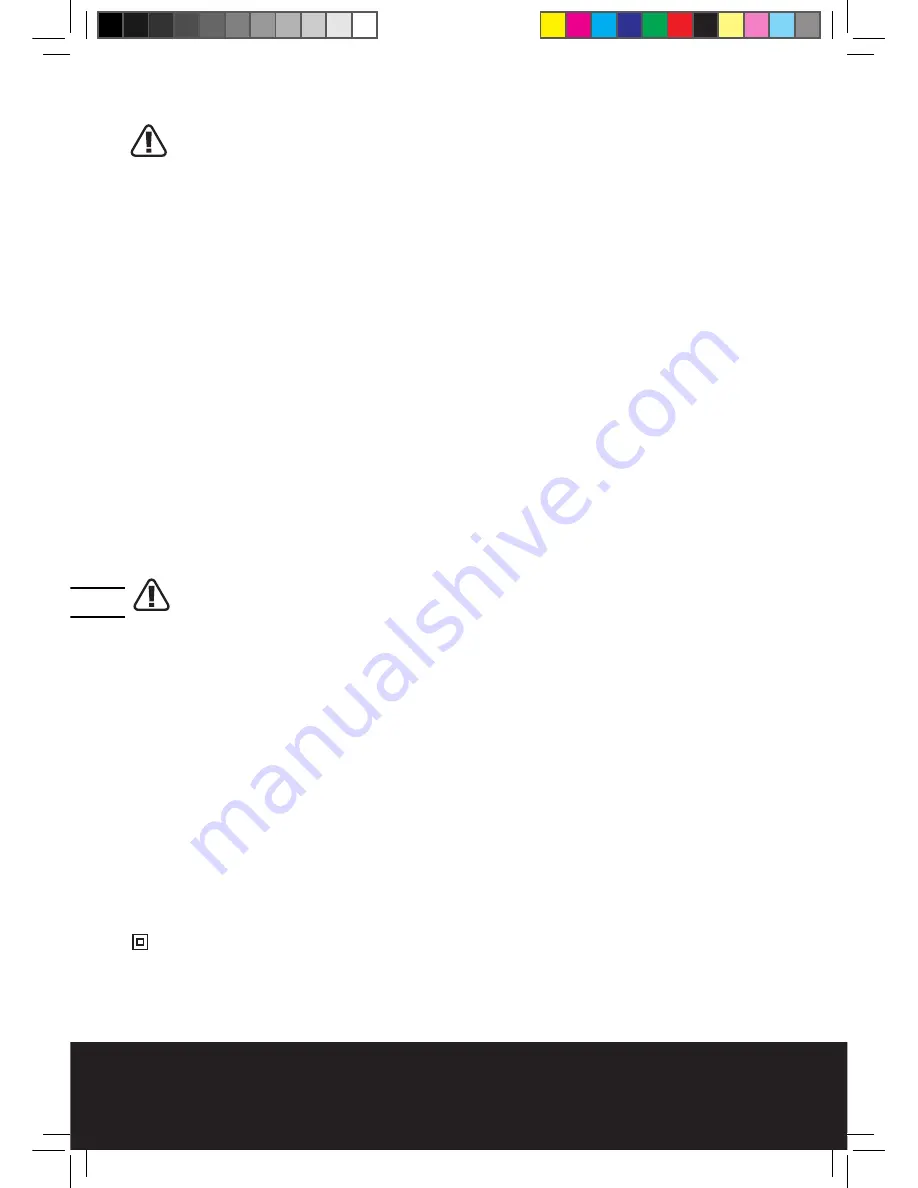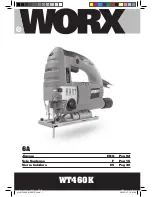
Jigsaw WT460K
ADDITIONAL SAFETY RULES - FOR JIGSAWS
WARNING! Failure to follow these rules may result in serious personal injury.
1) Hold tool by insulated gripping surfaces when performing an operation where the
cutting tools may contact hidden wiring or its own cord.
Contact with a “live” wire will
make exposed metal parts of the tool “live” and shock the operator.
2) Always keep your hands away from cutting area.
Do not reach under the material being
cut because the nearness of the blade to your hand is hidden from your sight.
3) Do not use dull or damaged blades.
Sharp blades will do the job better and safer. Bent
blades can break easily or cause kick back.
4) Secure material before cutting.
Never hold it in your hand or across your legs.
5) Always wear eye protectors when using tool.
Use a dust mask or respirator for
applications which generate dust.
6) Always check walls and ceiling to avoid hidden power cables and pipes.
7) Make sure the power switch is not “ON” before you plug the tool in.
Accidental start-
ups could cause injury.
8) Use clamps or a vise to hold work-piece whenever possible.
9) The base plate must always be held firmly against the material being cut
to reduce
saw vibration, blade jumping and blade breakage.
10) Never stop the cutting blade by applying side pressure to the blade.
11) Only withdraw the blade from the cut when the blade has stopped moving.
12) Your jigsaw is a hand held tool, do not clamp your jigsaw
13) Before cutting, check the cutting line is free of nails, screws, etc.
14) Save these instructions.
Refer to them frequently and use them to instruct others who may
use this tool. If someone borrows this tool, make sure they have these instructions.
WARNING! Some dust created by power sanding, sawing, grinding, drilling and
other construction activities contains chemicals known to cause cancer, birth
defects or other reproductive harm. Some examples of these chemicals are:
• From lead-based paint
• Crystalline silica from bricks and cement and other masonry products
• Arsenic and chromium from chemically-treated lumber
Your risk to these exposures varies, depending on how often you do this type of work. To reduce
your exposure to these chemicals:
• Work in a well ventilated area
• Work with approved safety equipment, such as those dust masks that are specifically designed to
filter out microscopic particles.
The label on your tool may include the following symbols:
V...................................................................................................................................................................Volts
A..................................................................................................................................................................Amps
Hz.................................................................................................................................................................Hertz
~..........................................................................................................................................Alternating current
n
o
.................................................................................................................................................Noload speed
.......................................................................................................Class II construction/ Double insulation
05
04
NA WT460K M 050727.indd 4
2005-7-27 18:01:41



















